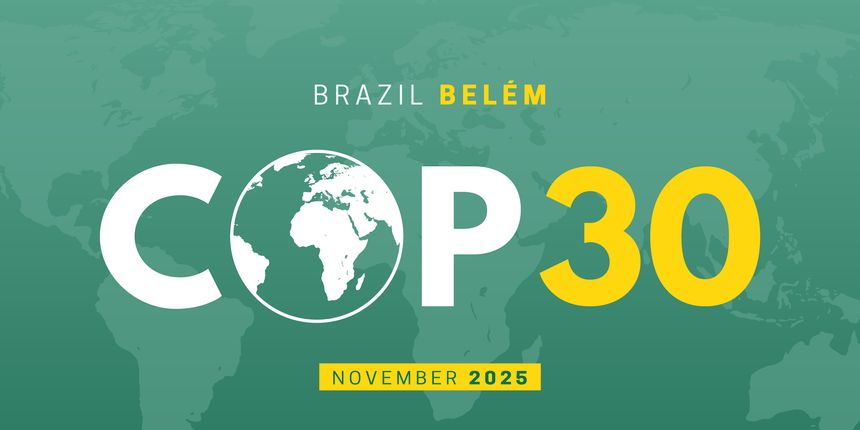COP30: Reflections on the first “Implementation” COP
Against the backdrop of agreeing climate change targets at previous conferences, the recently concluded 30th Conference of the Parties (“COP30”) marked the first true “implementation” COP. The key priorities of this COP were clear: accelerate implementation through structural mechanisms and delivery levers, link negotiations to tangible change for communities and demonstrate that multilateralism (even in the absence of the United States) is the appropriate vehicle for achieving these aims.
In this blog post, we highlight what was agreed in the Belém Package, what was missing and how this compares to what is happening closer to home in the UK and EU. Whilst for many businesses, COP30 may feel a million miles away from day-to-day ESG compliance, it has produced some scope for greater engagement with business interests and impacts on the local regulatory landscape.
What was agreed in the Belém Package?
- “Mutirão” decision: This high-level text proposed by the COP Presidency and adopted by the parties included:
- Resolution to unite efforts in a global mutirão against climate change calling on all actors to work together to keep 1.5C within reach in accordance with the Paris Agreement.
- Commitment to tripling adaptation finance by 2035.
- Reaffirmation of commitment to accelerate implementation of support for and cooperation in achieving nationally determined contributions (“NDCs”). Over 80 countries submitted up dated NDCs prior to this COP.
- Explicit acknowledgement that the global transition towards low greenhouse gas emissions and climate-resilient development is irreversible and the trend of the future. This statement provides certainty in respect of the direction of travel for businesses who are already working to become more climate resilient.
- Reference to trade for the first time with a plan for annual dialogues in 2026-2028.
- Belém Action Mechanism (“BAM”): This will require countries to work together in respect of the just transition to environmentally sustainable economies and societies for all. It aims to give teeth to the concept by enhancing technical assistance, capacity-building and knowledge-sharing. Notably, this includes a participatory clause allowing business and community groups to engage in just transition planning.
- Tropical Forests Forever Facility (“TFFF”): With the aim of ensuring that a standing forest is more valuable than a felled forest, this facility will provide funding to countries who commit to preserving tropical forests through a hybrid financing model which will mix sovereign and philanthropic funding to de-risk investments. However, only $5.5B of the $1285B was pledged, so there are question marks over how successful this will be.
- Baku Adaptation Roadmap 2026-2028 and voluntary indicators: The Baku Adaptation Roadmap which sets the global work program until the next Paris Agreement stocktake was agreed. This was accompanied by the adoption of 59 voluntary indicators for the Global Goal on Adaptation across sectors like water, food, health, and infrastructure were agreed to enable measurement of progress towards adaptation targets. Whilst these indicators will be very high level, they may help steer the UK’s National Adaptation Programme (“NAP”) which has been criticised for being piecemeal and disjointed by the Climate Change Committee.
- Fostering Investible National Planning and Implementation for Adaptation and Resilience (FINI): The establishment of the FINI initiative aims to make NAPs investible by unlocking $1T in adaptation projects within three years, with 20% expected from the private sector. This indicates increasing pressure on the private sector to contribute more to climate finance.
What Was Missing?
- Fossil fuels roadmap: Despite a coalition of more than 80 countries pushing for a roadmap (following on from the COP28 resolution to “transition away from fossil fuels”) parties could not agree this and the issue of fossil fuels was sidestepped entirely. In its place came a commitment by the Brazilian presidency to move forward with a voluntary roadmap outside of formal COP talks. The UK and EU were in strong support of a roadmap, consistent with their own ambitious, legally binding emissions targets. Businesses in the UK can shape future roadmaps by continuing to respond robustly to government consultations which touch on this issue.
- Deforestation roadmap: Similarly, parties could not agree to an actionable time-bound roadmap on deforestation and a voluntary roadmap led by the Brazilian presidency on halting and reversing deforestation by 2030 will be pursued. Lack of progress on this issue is unsurprising given the repeated delays and scope changes we have seen in respect of the EU Deforestation Regulation and UK Forest Risk Commodity Regulation. This may serve as a signal to countries seeking to lead the way on tackling deforestation that stronger more consistent action at home would strengthen their negotiation position at future COPs.
Final thoughts:
COP30 has shown that reaching consensus on specific implementation actions is no easy feat. However, the initiatives that have been agreed and strong coalitions formed even on traditionally knotty topics give weight to the assertion in the Mutirão Decision that the transition to low-emission, climate-resilient economies is inevitable. For businesses, this underscores the need to stay ahead of the curve and progress implementation through alignment with emerging regulatory frameworks and market expectations.

